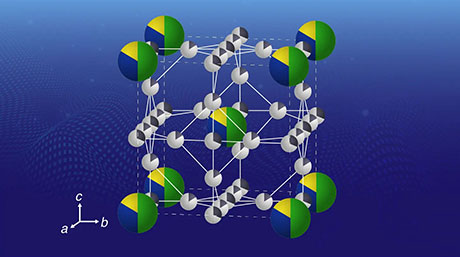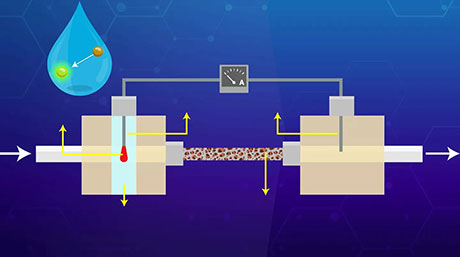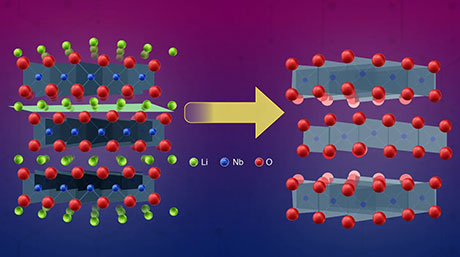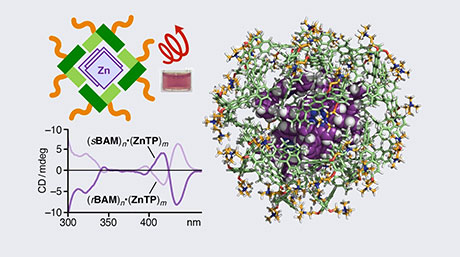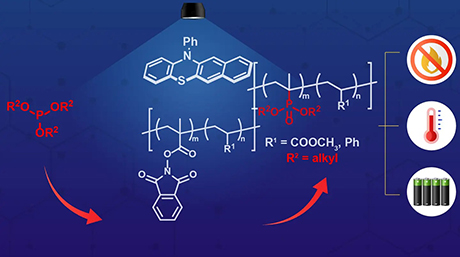Chemical Science and Engineering News
Building Better Solar Cells: Assembly of 2D Molecular Structures with Triptycene Scaffold
2D assemblies of pentacene constructed using the supramolecular scaffold demonstrated high efficiency in singlet fission, a process that can enhance solar cell performance
A tripodal triptycene supramolecular scaffold developed by researchers at Science Tokyo could lead to significant advancements in the design of two-dimensional (2D) molecular assemblies. Researchers placed pentacene molecules between triptycene units, forming a 2D structure aligned over one dimension that showed high efficiency in singlet fission. This method offers a rational approach to designing 2D assemblies with various molecules, opening up new possibilities for advancements in materials science and electronics.
Building Diverse Two-Dimensional (2D) Molecular Assemblies with Triptycene Scaffolds
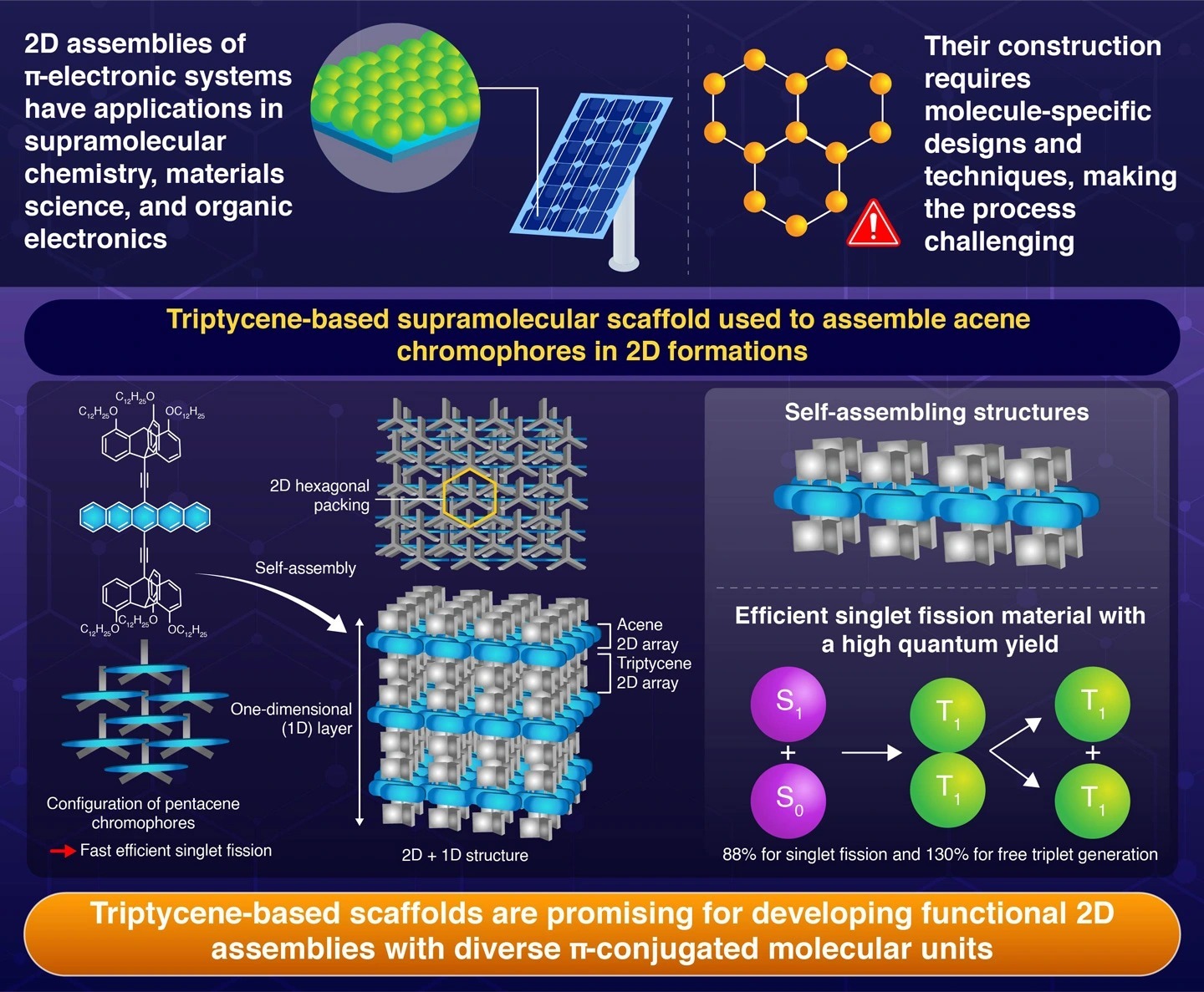
Supramolecular scaffold–directed two-dimensional assembly of pentacene into a configuration to facilitate singlet fission
Fukumitsu et al. (2024) | Science Advances | 10.1126/sciadv.adn7763

Supramolecular scaffold–directed two-dimensional assembly of pentacene into a configuration to facilitate singlet fission
Fukumitsu et al. (2024) | Science Advances | 10.1126/sciadv.adn7763
Research in the field of material science and electronics relies on the innovative arrangement of molecules or atoms to develop materials with unique properties not found in conventional materials. Two-dimensional (2D) assemblies of π-electronic systems, arranged in thin layers, are becoming increasingly important in the fields of materials science and organic electronics. Their unique arrangement allows for specific electronic and physical properties, making them ideal for applications like solar cells, and flexible displays. However, creating such assemblies is challenging because it often requires special designs and techniques for each type of molecule.
In a study published in Science Advances![]() , on 13 September 2024, Assistant Professor Tomoya Fukui and Professor Takanori Fukushima from Institute of Science Tokyo, in collaboration with Professor Taku Hasobe from Keio University, present a streamlined approach using supramolecular scaffolds. These scaffolds serve as molecular templates, allowing for the assembly of various molecules into 2D structures without requiring custom setups for each component.
, on 13 September 2024, Assistant Professor Tomoya Fukui and Professor Takanori Fukushima from Institute of Science Tokyo, in collaboration with Professor Taku Hasobe from Keio University, present a streamlined approach using supramolecular scaffolds. These scaffolds serve as molecular templates, allowing for the assembly of various molecules into 2D structures without requiring custom setups for each component.
The researchers used 1,8,13-substituted tripodal triptycene as a supramolecular scaffold. Tripodal triptycene-based supramolecular scaffold can assemble into a 2D hexagonal pattern that can be stacked along one dimension, creating a “2D + 1D” structure. The space between these layers can accommodate other molecules. In their earlier work, the team incorporated spherical fullerene (C60) molecules within these layers. In their latest study, they demonstrated that this scaffold could also organize planar acene chromophores by sandwiching pentacene and anthracene chromophores between two triptycene units, forming two distinct 2D self-assembling structures.
Acenes were selected due to their potential for singlet fission (SF). In this process, a single high-energy photon is converted into two lower-energy triplet excitons, which is expected to enhance solar cell efficiency by increasing charge carriers. Dr. Fukui notes that for efficient singlet fission in the solid state, two conditions must be met: “Acene chromophores need to be placed in close proximity to each other to provide sufficient electronic coupling. Second, the environment around the chromophores needs to be designed to allow them to undergo conformational changes to prevent triplet recombination.”
In the pentacene-based assemblies, the effective overlap of chromophores enabled singlet fission to occur, with a high quantum yield of 88% for generating a pair of triplets and 130% for producing two free triplets. However, the anthracene-based assemblies did not exhibit singlet fission, likely due to weaker electronic coupling between the chromophores.
“Pentacene chromophores, which have a size larger than that of the diameter of the triptycene framework, have effective overlap to cause SF, while such an overlap between the chromophores does not occur in the assembly of anthracene analog,” explains Prof. Fukushima.
Such assemblies can be integrated into comb-shaped electrodes, potentially paving to the way for device applications. “This demonstrates the utility of the triptycene-based supramolecular scaffold to design functional pi-electronic molecular assemblies,” says Prof. Hasobe. The scaffold's adaptable design offers a versatile platform for constructing 2D assemblies with different molecules, paving the way for advancements in supramolecular chemistry, materials science, and organic electronics.
- Reference
| Authors: | Masato Fukumitsu1,2, Tomoya Fukui1,2,3*, Yoshiaki Shoji1,2,3, Takashi Kajitani4, Ramsha Khan5, Nikolai V. Tkachenko5*†, Hayato Sakai6, Taku Hasobe6*, Takanori Fukushima1,2,3* |
|---|---|
| Title: | Supramolecular scaffold–directed two-dimensional assembly of pentacene into a configuration to facilitate singlet fission |
| Journal: | Science Advances |
| Affiliations: |
1 Laboratory for Chemistry and Life Science, Institute of Intergrated Research, Institute of SCIENCE TOKYO, Japan. 2 Department of Chemical Science and Engineering, School of Materials and Chemical Technology, Institute of SCIENCE TOKYO, Japan. 3 Research Center for Autonomous Systems Materialogy (ASMat), Institute of Innovative Research, Institute of SCIENCE TOKYO, Japan. 4 Open Facility Development Office, Open Facility Center, Institute of SCIENCE TOKYO, Japan. 5 Chemistry and Advanced Material Group, Faculty of Engineering and Natural Sciences, Tampere University, Finland. 6 Department of Chemistry, Faculty of Science and Technology, Keio University, Japan. |
| DOI: |
10.1126/sciadv.adn7763 |
| *Corresponding author’s email: fukui@res.titech.ac.jp (Tomoya Fukui); hasobe@chem.keio.ac.jp (Taku Hasobe); fukushima@res.titech.ac.jp (Takanori Fukushima) | |
- From Defects to Order: Spontaneously Emerging Crystal Arrangements in Perovskite Halides | Tokyo Tech News
- Isomerism Can Control and Increase the Diversity of Structure of Covalent Organic Frameworks, Emerging Nanoporous Solids | Tokyo Tech News
- Visualizing Temperature Transport: An Unexpected Technique for Nanoscale Characterization | Tokyo Tech News
- Can a flowing liquid-like material maintain its structural order like crystals? | Tokyo Tech News
- No Assembly Required: Self-assembling Silicone-based Polymers | Tokyo Tech News
- Takanori Fukushima | Researcher Finder - Science Tokyo STAR Search
- Tomoya Fukui | Researcher Finder - Science Tokyo STAR Search
- FUKUSHIMA GROUP
- Fukushima & Shoji Laboratory | School of Materials and Chemical Technology Laboratory Search Site
- Institute of Integrated Research
- Laboratory for Chemistry and Life Science, Institute of Integrated Research
- Research Center for Autonomous Systems Materialogy (ASMat)
- Chemical Science and Engineering Graduate Major|Education|Department of Chemical Science and Engineering, School of Materials and Chemical Technology
- Chemical Science and Engineering Undergraduate Major|Education|Department of Chemical Science and Engineering, School of Materials and Chemical Technology
- Department of Chemistry, Faculty of Science and Technology, Keio University
- Research
Further information
Assistant Professor Tomoya Fukui
Institute of Integrated Research, Institute of Science Tokyo
Email: fukui@res.titech.ac.jp
Professor Takanori Fukushima
Institute of Integrated Research, Institute of Science Tokyo
Email: fukushima@res.titech.ac.jp
